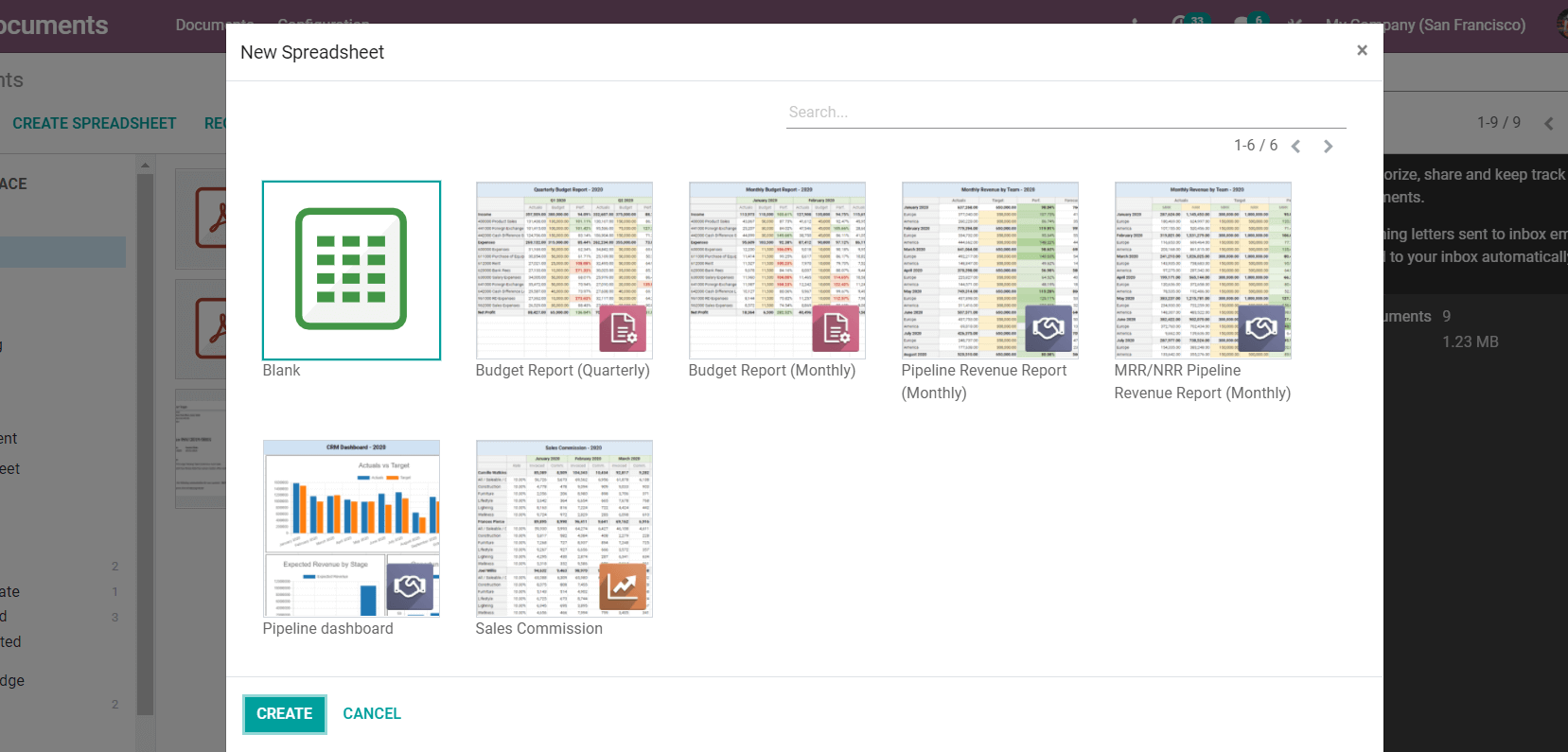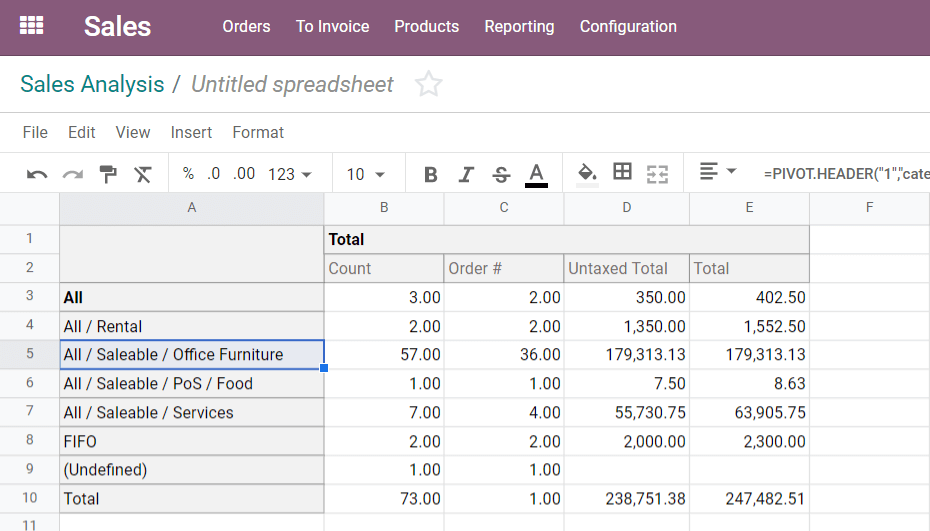Odoo being an advanced ERP system is filled with efficient management tools to make business management more efficient and easy. The spreadsheet is one of the tools in the Odoo ERP system that allows you to have a highly detailed and explicit data presentation that actually allows you to communicate with the data in a single glance.
This blog will give you a short description of the Odoo spreadsheet and its unique features.
The spreadsheet is a highly integrated tool in Odoo and is available in all of the applications in Odoo. The Odoo Spreadsheet Is automated in the Odoo environment and as it has access to all of the applications in the Odoo the system will automatically update the data according to the reports from the applications and you can access this data from the application itself. The spreadsheets are cutting edge in data clarity and they will avoid any possible clusters within the data. You can manage your data from the different modules of the Odoo from the spreadsheet. The data may include sales, purchases, inventory details, and many more aspects.
Features
As a spreadsheet, the features are quite basic and grounded as most of the spreadsheet systems like Excel sheets and Google spreadsheets but what Odoo does better is the efficiency created by the sophisticated features of the tool. The tool is developed to work seamlessly in correlation with the Odoo environment. This allows the Spreadsheet to have access to all of the applications in the Odoo. This advanced feature allows you to work seamlessly through the Modules and the spreadsheets. The spreadsheet in Odoo uses the same formulas as the other traditional spreadsheet tools like Excel so you don't have to learn a new set of formulas for computation purposes.
Any Odoo user can use Spreadsheets and there are no restrictions for the usage of this tool and you can access it directly from the Documentation application. You can create your Spreadsheet directly from the Documentation application and Odoo has a set of templates that comes as default so that you don't have to jump into an empty sheet with columns. You can choose the template from the Documentation application.

As have mentioned earlier spreadsheets are available in every module in Odoo and all are equipped with the feature of Filtering so that we have to evaluate only the relevant information and not every single data. We can switch to the pivot view to define the axis points of the spreadsheet and click on ‘Insert in the spreadsheet’ and our data will be entered on the spreadsheet and it's the procedure across all of the applications in Odoo.

As the spreadsheet is working with the real-time data that is collected from the respective modules, this is a huge advantage for you and you don't have to type in the data again on the spreadsheet. This is also the main reason why the Spreadsheet is integrated with the Odoo applications. You can name, save and save your spreadsheet in any format you want. There are some features in the Odoo spreadsheet that are common across all of the similar applications like Excel sheets. These features include formatting the text, background coloring, highlighting frames, inserting columns and rows or an entire spreadsheet. This gives the Odoo spreadsheet a grounded nature and will not make you feel like an alien to the system even in the case of the formulas you can follow the traditional rules and requires no extra coaching on the formulas alone but the applications of the formulas have changed significantly, and have a much more optimized nature along with the visualized nature of the spreadsheet and data through the option of conditional formatting or the usage of graphical representations. Conditional formatting allows you to graphically highlight columns and rows based on the importance of the data represented.
The filtering option in Odoo is an extremely useful tool and you can use this to optimize your experience in the spreadsheet and will make your work through the spreadsheet and data much easier. You can set filters on the basis of your own style of data management, you can determine the data type and the other various data fluctuations to filter the options. This feature allows you to have a clutter-free experience in Odoo spreadsheets and also gives you enough space and room for data analysis and visualization. Accidental cleaning of Spreadsheet data is a common human error that happens all the time and you can either press the undo button or retype the entire data. Undo is practical but only to a certain extent and the chances of getting your data mixed up in the spreadsheet is high. To avoid this Odoo has a simple but quite advanced feature called ‘Re-Insert Pivot’. This feature allows you to re-insert the entire spreadsheet and if you want to reset the data of a single cell right-click on the cell and click on the ‘insert pivot cell’ which will immediately insert the data on the cell. You will get an immediate popup showing the details on the deleted cells and their respective values.
There are tons of features in the Odoo spreadsheets to help and assist you through managing the most intricate business data with ease and efficiency. The data management tool is much more advanced than its predecessors and has features to optimize the user experience. The advanced Odoo environment is a perfect ground for the Odoo spreadsheet as it is integrated into all of the applications in Odoo and you can work with much ease. As the Odoo spreadsheet is automated and has freedom in the other applications of Odoo you don't have to personally enter the data of every application into the spreadsheet anymore; it will be automatically updated in the spreadsheet itself. With advanced filtering options, you can view and analyze data without any clutter. With impressive visualization graph tools, you can present data in meetings much more efficiently and Odoo Spreadsheet will allow the data to have direct communication with you meaning that every single data to its minute detail is shown explicitly in the Spreadsheet and you can manage and filter these data in any way you want.